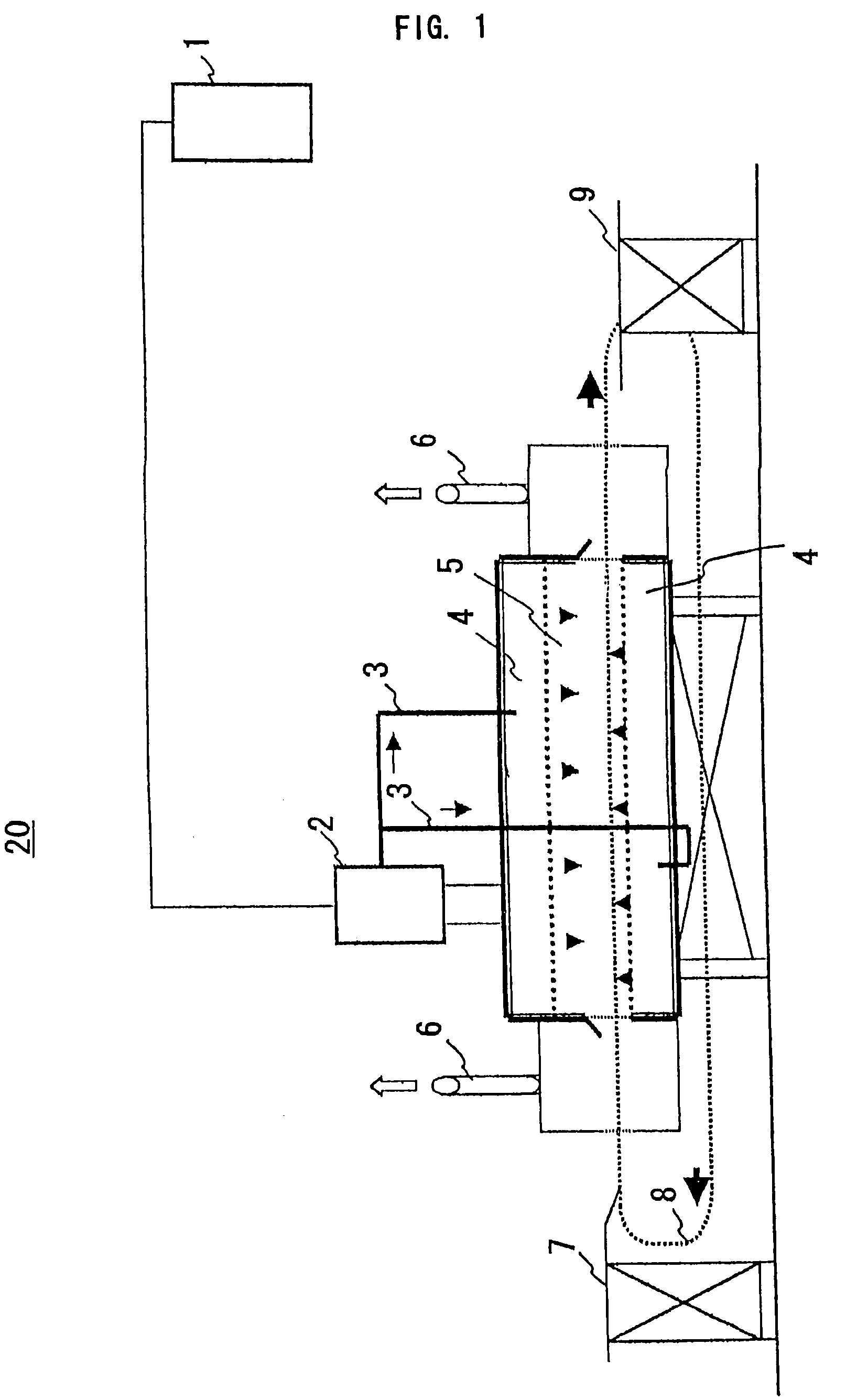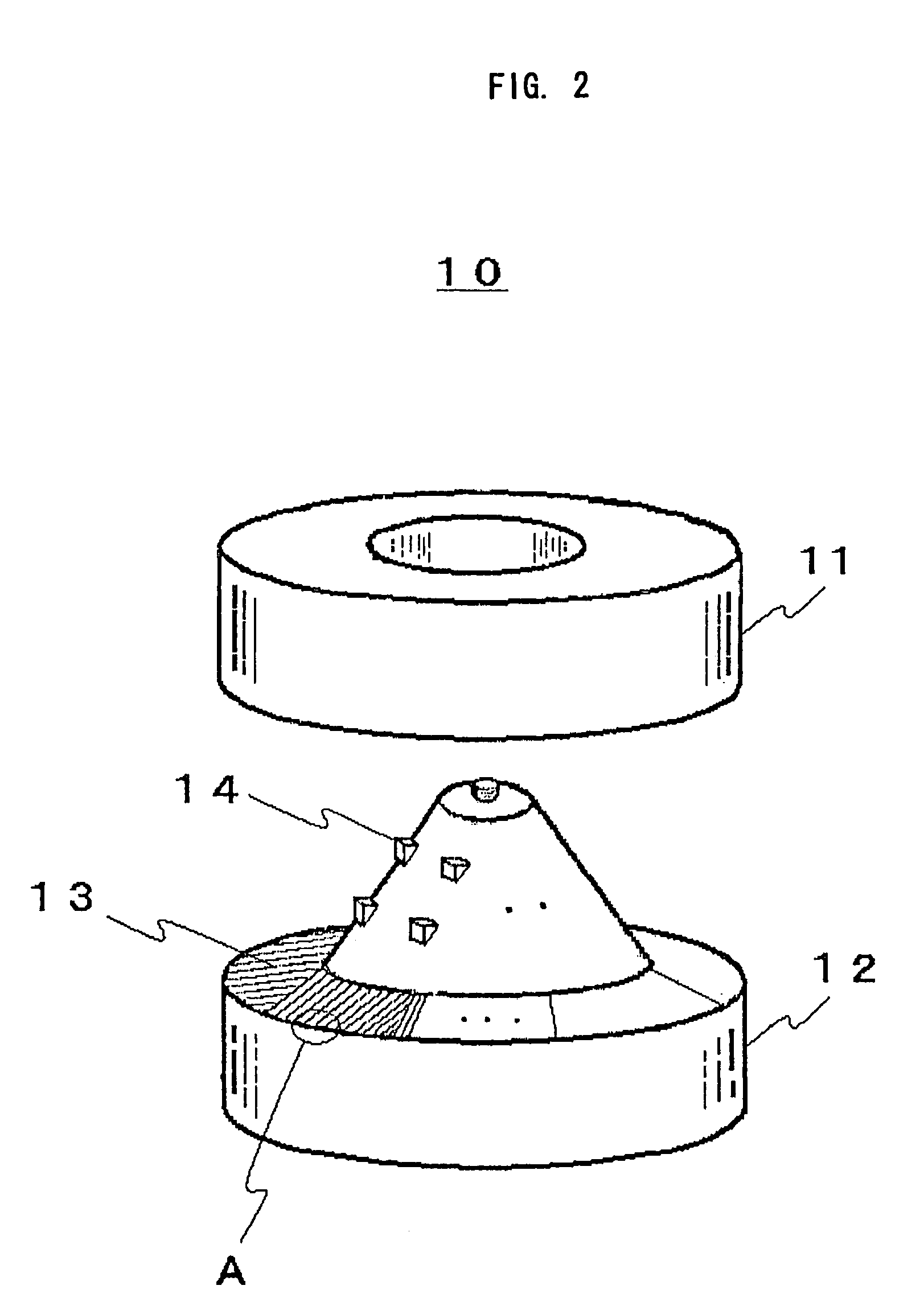Process for producing soybean powder
a technology of soybean powder and process, applied in the field of process for producing soybean powder, can solve the problems of complex operation, unfavorable and inability to completely remove source constituents of disagreeable odor and tas
- Summary
- Abstract
- Description
- Claims
- Application Information
AI Technical Summary
Benefits of technology
Problems solved by technology
Method used
Image
Examples
examples 1 and 2
[0057]The raw material soybean powder of the same lot as that used in the Comparative Example was formed into lumps by applying superheated water vapor at 190° C. for 180 seconds. The lumps were granulated with a different distance (L) between the opposing mortar members. The resulting granules were dispersed in air and the particle size distribution was measured. The results are shown in FIG. 9 (Example 1) and FIG. 10 (Example 2). Example 1 was performed with a smaller distance between the opposing mortar members; Example 2, with a larger distance. Both cases simplified the multiple particle size distribution into a single peak distribution. The peak particle size in Example 1 was about 7 times as large as that in ethanol (see FIG. 7), and the peak particle size in Example 2 was 15 times. This suggests that granulation was carried out effectively.
examples no.1
EXAMPLES NO. 1 TO NO. 5
[0064]Soybean (L-Star) powder produced by the first production process was immersed in water and allowed to stand until the soybean powder sufficiently absorbed the water (for about 16 hours). The weight of water was about 10 relative to the weight of the soybean powder. Then, the sample was filtered through cloth and heat-treated in a hot water bath for 30 minutes to yield soybean milk.
[0065]Table 1 shows heat drying conditions for lipoxygenase-free soybean powder. Five samples No. 1 to No. 5 were used. For a comparative example, fine powder of lipoxygenase-free soybean grains not subjected to heat drying treatment was used.
[0066]
TABLE 1Heat Drying Conditions for Soybean GrainsComparativeExamplesConditionsExampleNo. 1No. 2No. 3No. 4No. 5Temperature (° C.)untreated150170170170200Time (s)120609012060
[0067]The tastes of the resulting soybean milk samples were subjected to evaluation tests by questionnaires. Ten each of adult men and women, namely 20 people in to...
examples no.6
EXAMPLES NO. 6 AND NO. 7
[0069]A soybean powder sample of Example No. 6 was prepared by the first production process at a heat drying temperature of 170° C. for 90 seconds, and a soybean powder sample of Example No. 7 was prepared by the second production process at a heat drying temperature of 230° C. for 90 seconds. A soybean powder sample not subjected to heat drying treatment was used for a comparative example. The acid value and peroxide value of oil extracted from each sample were measured.
[0070]Table 3 shows how the heat drying treatment affects the acid value and peroxide value. According to Table 3, it is obvious that the processes of the present examples do not change the acid value and peroxide value even though heat drying treatment is applied.
[0071]
TABLE 3Effect of Heat Drying Treatmenton Acid Value and Peroxide ValueSoybean grain sampleComparativeEvaluation itemExampleNo. 6No. 7Acid value2.331.522.74Peroxide value0.6 meq / kg0.4 meq / kg0.5 meq / kg
PUM
 Login to View More
Login to View More Abstract
Description
Claims
Application Information
 Login to View More
Login to View More - R&D
- Intellectual Property
- Life Sciences
- Materials
- Tech Scout
- Unparalleled Data Quality
- Higher Quality Content
- 60% Fewer Hallucinations
Browse by: Latest US Patents, China's latest patents, Technical Efficacy Thesaurus, Application Domain, Technology Topic, Popular Technical Reports.
© 2025 PatSnap. All rights reserved.Legal|Privacy policy|Modern Slavery Act Transparency Statement|Sitemap|About US| Contact US: help@patsnap.com



